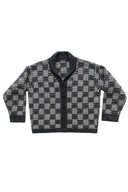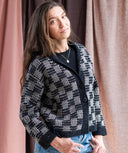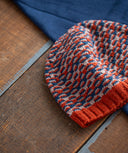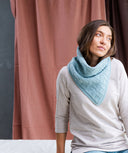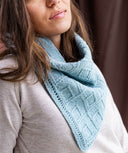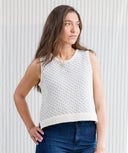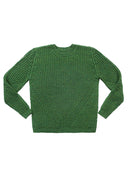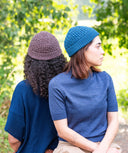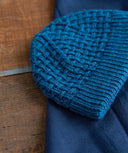Color Theory for Stranded Colorwork
One of the most enticing aspects of stranded colorwork knitting is the opportunity to play with color. It is truly fascinating how a wide range of results can be produced from a single colorwork chart, based solely on the use of the concepts of hue and value. These attributes of color are intimately linked to the success of your final stranded colorwork project. In this tutorial, we offer a crash course on a few fundamental rules about color theory and how you can use this knowledge as a springboard when crafting a color story for your next stranded colorwork project.
Hue and Value
Every color under the sun (with the exception of pure black and pure white, depending on whom you ask) has a hue and a value. These two words describe the two basic “ingredients” of color, and understanding their distinction is key to successfully combining color in knitting.
Hue refers to the attribute of a color by virtue of which it is discernible as red, green, blue, etc. The word “hue” is often used interchangeably with the word “color”.
Value refers to a color’s relative degree of lightness or darkness. The easiest way to think about value is by visualizing color on a greyscale spectrum. Every color has a value, though it may sometimes be difficult to discern depending on how saturated a color’s hue is.
The diagram below shows a range of values from pure white to pure black, with equal intervals in value from one shade to the next.

Using Value When Choosing Colors
When choosing colors for colorwork patterns, the assessment of value should always be your starting point. Color value helps our eyes discern between colors by way of their contrast. The greater the difference between two colors’ values, the more contrastive they appear to our eyes — and hence, the easier they are to read. With stranded knitting, value is especially important because colors are combined as the fabric is created, with single stitches of one color neighboring single stitches of another. If your value structure is not varied, all your careful handwork may result in a muddy motif that is difficult to see — and appreciate!
Tip: Value is less of a concern with broad stripes or colorblock fabrics because the surface area of a single color is large, making it easy for the eyes to distinguish between even subtle shifts of hue and value.

The image above illustrates the range of distinction your colorwork can have based on value choices.
Value Testing a Color Story
Your best course of action is to value test your colors before you begin knitting. One of the easiest ways to test your values is with a squint test:
Place your potential colors on a flat, well-lit surface and huddle them next to one another. Squint your eyes and study how squinting causes the colors to become more or less similar in value.
When squinting, values are easier to recognize. If once squinting, your colors become more similar, you likely are working with colors that are too similar in value and should consider pulling in something with more contrast.
A second, more high-tech method, is to take a photograph of your colors on a digital camera (smartphones are wonderful for this purpose) and convert the image to greyscale. A black-and-white image removes all hue information and leaves only the values of each color to compare. This is a fantastic trick that takes all the guesswork out of the equation.
To illustrate this method, we’ve taken photos two different color schemes for a three-color stranded colorwork motif. The images on the left show the colors as they appear to our eyes; the images on the right have had all the hue information taken away, leaving only values to be contrasted. It is easy to tell right away which of these two color groupings would make a more successful finished piece:


If both color combinations were used to knit the same colorwork motif, you would quickly notice a drastic difference in the overall effect on the finished fabric. Combination 1 would have a graphic effect that enhances the colorwork motif, while Combination 2 would cause the motif to fade into a much less discernible configuration.

When beginning a stranded colorwork project, take a grayscale photo to quickly assess the value of the colors you would potentially use, and then whittle down your options for swatching. You can see above how quickly the palette separates itself into light, medium, and dark values with a simple black-and-white conversion. For more information, view our Selecting Colors For Colorwork video tutorial.
We adapted this tutorial from Jared’s blog posts on color theory.
